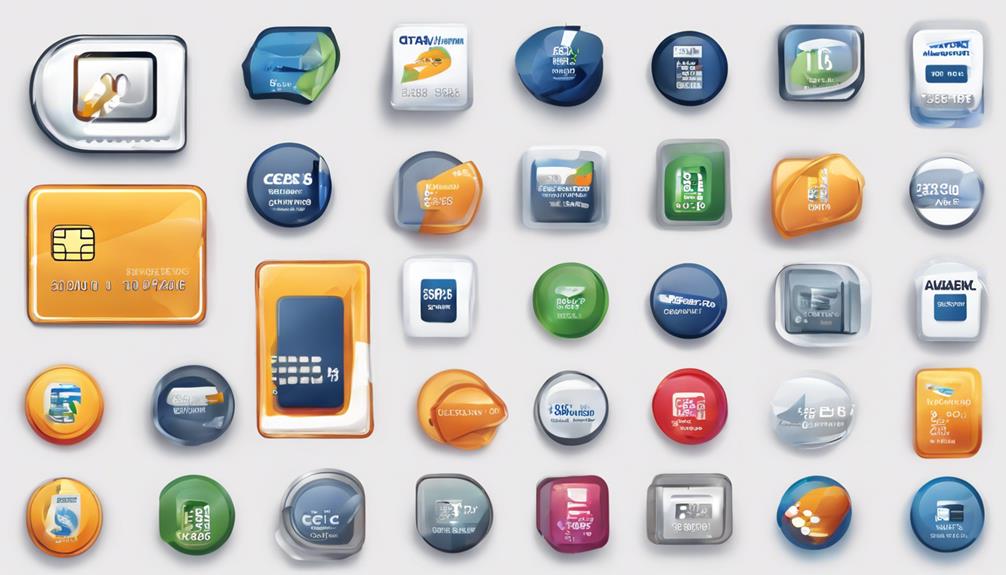To decode chargeback reason codes, you need to understand what caused the dispute—like fraud, product issues, or authentication problems. By identifying these reasons, you can tailor your responses and gather the right evidence, such as receipts or shipment details. Recognizing patterns helps you improve fraud prevention and reduce future disputes. Staying proactive and informed guarantees you safeguard your revenue and maintain customer trust. Continue exploring to master effective response strategies for each reason code.
Key Takeaways
- Understand specific chargeback reason codes to identify the underlying dispute causes accurately.
- Collect targeted evidence such as receipts, shipping info, or customer communication to support your case.
- Respond promptly with clear, relevant documentation tailored to each reason code for higher success.
- Use dispute data to identify recurring issues and improve fraud prevention and transaction processes.
- Educate your team on reason codes to streamline responses and reduce financial and reputational risks.

Have you ever wondered why a transaction gets disputed and marked for a chargeback? It often comes down to a mismatch between what was expected and what was actually processed. When a customer contacts their bank to dispute a charge, the issuer assigns a specific reason code that explains why they believe the transaction is invalid. Understanding these chargeback reason codes is vital because they provide insight into the root cause of the dispute. As a merchant, recognizing these clues helps you respond effectively and implement dispute resolution strategies that can minimize losses and protect your reputation. One of the most effective ways to manage chargebacks is through robust fraud prevention measures. When you proactively identify and block suspicious transactions, you reduce the likelihood of fraud-related disputes. This includes using advanced fraud detection tools, verifying customer identities, and monitoring transactions for unusual patterns. By doing so, you not only prevent fraudulent activity but also demonstrate to card networks and issuers that you’re committed to secure payment processing, potentially leading to fewer chargebacks in the first place. When a dispute does occur, understanding the associated reason code enables you to craft a targeted response. For example, if the reason code indicates “unauthorized transaction,” you’ll want to gather proof of customer authorization, such as signed receipts or IP address records. If the dispute stems from a “product not received” claim, providing shipment tracking details becomes essential. The key to effective dispute resolution is timely and accurate documentation. When you respond quickly with clear evidence, you increase your chances of winning the case or at least reducing the chargeback amount. Additionally, educating your team about common reason codes can streamline your internal processes, ensuring that responses are consistent and thorough. This knowledge also helps you identify patterns that might indicate systematic fraud or recurring issues with specific products or services. Recognizing the underlying cause of each chargeback reason code empowers you to refine your fraud prevention strategies further. It’s also wise to maintain open communication channels with your customers; often, disputes can be resolved amicably outside of formal chargebacks if you reach out promptly. Furthermore, understanding the dog names that resonate well with different breeds can help in marketing or branding efforts when customer loyalty is involved. Ultimately, by understanding chargeback reason codes and integrating effective dispute resolution and fraud prevention techniques, you safeguard your business from unnecessary financial loss and customer dissatisfaction. Staying proactive and informed allows you to adapt to evolving fraud tactics while maintaining smooth, trustworthy payment experiences for your customers.
Frequently Asked Questions
How Can Merchants Prevent Chargebacks Related to Specific Reason Codes?
To prevent chargebacks related to specific reason codes, you should focus on transaction monitoring and customer communication. Keep an eye on suspicious or high-risk transactions, and reach out to customers promptly if issues arise. Clear, proactive communication helps resolve problems early, reducing dispute chances. Additionally, verify your billing details are accurate and transparent, making it easy for customers to recognize charges and avoid misunderstandings that lead to chargebacks.
Are There Industry-Specific Chargeback Reason Codes I Should Know?
Yes, industry standards include specific chargeback reason codes tailored to common categories like merchandise, services, and fraud. You should familiarize yourself with these industry-specific codes because they help you understand the root causes of disputes. Knowing these codes allows you to respond effectively, reduce chargebacks, and improve your risk management strategies, ultimately protecting your revenue and reputation in your particular industry.
What Is the Typical Timeline for Responding to a Chargeback?
Think of the dispute window as a ticking clock you must beat. Usually, you have 45 to 180 days from the transaction date to respond, depending on your bank and card network. A timely response is your best defense, like a swift arrow hitting its mark. Missing this window weakens your case, so act quickly. Stay vigilant, and always respond within the specified dispute window to protect your business.
Can Chargeback Reason Codes Impact Merchant Account Standing?
Yes, chargeback reason codes can impact your merchant account standing. If you frequently face chargebacks for reasons like fraud or customer disputes, it could harm your merchant reputation and lead to higher fees or account restrictions. To protect your account, focus on fraud prevention and respond promptly to chargebacks. Maintaining good practices and minimizing chargeback reasons helps preserve your merchant account health and supports your ongoing business success.
How Do International Transactions Influence Chargeback Reason Codes?
Think of international transactions as traversing a foreign port; unexpected storms, like currency fluctuations and cross border fees, can cause trouble. These factors influence chargeback reason codes because they may lead to disputes over pricing or authorization. You might see codes related to unauthorized transactions or pricing issues. To avoid trouble, clearly communicate currency policies and account for cross border fees, helping protect your merchant account from unnecessary chargebacks.
Conclusion
Understanding chargeback reason codes is like having a map to navigate a maze—you’ll avoid dead ends and find your way more easily. By responding promptly and accurately, you’re not just solving a puzzle; you’re strengthening your reputation and protecting your business. Remember, each chargeback is a lesson, not a setback. Stay informed and proactive, and you’ll steer through the storm like a captain confidently guiding their ship to calmer waters.









